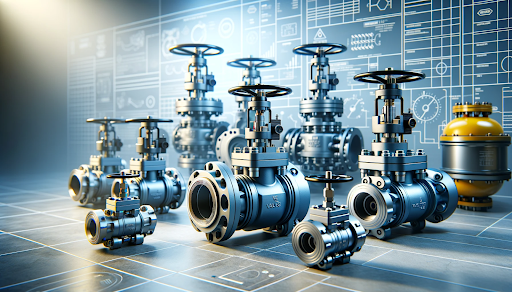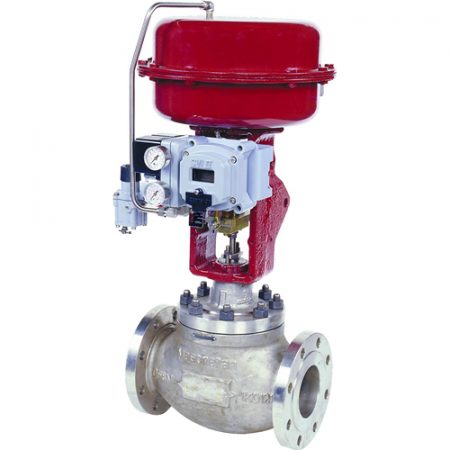The Role of Control Valves in Fluid Circulation Management Systems
The Role of Control Valves in Fluid Circulation Management Systems
Blog Article

Maximize Energy Savings and Comfort With Advanced Structure Automation Controls
In the realm of modern-day design and center monitoring, the integration of sophisticated building automation controls stands as an essential innovation. By taking advantage of the power of automation, buildings can adapt, react, and advance in methods that were when inconceivable.
Energy Performance Perks
Power efficiency advantages can substantially minimize power intake and operational costs in buildings. Energy-efficient systems, such as sophisticated building automation controls, can enhance the usage of resources like home heating, lights, and cooling, leading to reduced energy costs over time.
Moreover, boosted energy effectiveness can lengthen the life-span of structure devices and systems. By operating extra effectively, HVAC systems, lighting fixtures, and various other building components experience less deterioration, causing lowered upkeep and substitute costs. Additionally, energy-efficient structures frequently command higher residential property values and rental prices, giving long-lasting monetary benefits to proprietors.
Moreover, energy efficiency can boost owner comfort and productivity. Appropriately managed interior settings with optimum illumination and thermal conditions create an even more conducive and positive office, bring about boosted employee complete satisfaction and performance. Overall, the power efficiency advantages linked with innovative structure automation controls are multifaceted, including price financial savings, ecological stewardship, and occupant well-being.
Improved Comfort Control
Enhancing comfort control in building atmospheres requires a sophisticated combination of sophisticated automation systems for ideal passenger wellness. By making use of advanced building automation controls, centers can tailor the indoor atmosphere to fulfill the particular requirements and choices of owners. control valves.
Boosted comfort control exceeds basic temperature level changes. It includes functions such as tailored setups, tenancy sensing units, and natural light application to develop a vibrant and responsive environment. By integrating these sophisticated controls, buildings can not only enhance comfort but also boost power effectiveness by enhancing system procedures based upon actual occupancy and usage patterns. Eventually, focusing on occupant convenience with innovative automation systems leads to a much more enjoyable and much healthier interior environment.
Operational Efficiency Improvements

Additionally, the execution of real-time surveillance and analytics tools allows structure drivers to determine power inefficiencies and operational abnormalities without delay. By constantly keeping an eye on energy use patterns and system efficiency metrics, changes can be made in real-time to enhance energy intake and guarantee peak functional efficiency. control valves. Additionally, incorporating demand response strategies right into structure automation controls can additionally improve functional efficiency by dynamically changing power usage based upon grid problems and prices signals
Indoor Climate Optimization
Reliable interior environment optimization is a fundamental aspect of building automation controls, making certain passengers' comfort and health while optimizing power cost savings. By making use of advanced sensors and controls, building automation systems can continually change and keep an eye on temperature, moisture levels, air top quality, and ventilation to create an optimum indoor environment. Maintaining consistent and comfortable problems not just boosts occupant contentment yet also enhances performance and total wellness.
Indoor environment optimization also plays a critical role in energy performance. By fine-tuning home heating, air conditioning, and air flow systems based on real-time data and occupancy patterns, developing automation controls can substantially lower energy usage - control valves. Carrying out approaches such as demand-controlled air flow and thermal zoning can assist minimize energy waste while making certain that each location of the structure gets the necessary conditioning.

Sustainable Setting Production
Structure automation manages not only maximize indoor environment conditions for energy efficiency and occupant comfort but also lay the structure for producing a sustainable setting through tactical administration of systems and resources. By incorporating sophisticated structure automation modern technologies, additional resources such as sensors, actuators, and intelligent software program, facilities can adjust and check power use in real-time to lessen waste and minimize their carbon impact. These systems make it possible for predictive upkeep, identifying prospective problems before they rise and maximizing devices performance to enhance durability and performance.
Additionally, lasting environment production extends beyond power monitoring to encompass water preservation, waste decrease, and interior air quality improvement. Building automation controls can control water usage, spot leaks, and make certain proper waste disposal practices, contributing to overall sustainability efforts. In addition, by checking and managing ventilation and filtration systems, these innovations enhance resident wellness and productivity while lowering power usage related to a/c operations.
Conclusion
In verdict, progressed structure automation regulates deal substantial benefits in regards to power financial savings, comfort control, operational effectiveness, interior environment optimization, and producing a sustainable environment. visit their website By executing these controls, structures can achieve ideal performance while lowering power intake and improving resident comfort. It appears that making use of innovative automation technology is essential in improving structure performance and developing a more lasting future.
Power efficiency benefits can substantially reduce energy usage and functional prices in buildings. On the whole, the energy performance benefits linked with advanced structure automation controls are complex, including price savings, environmental stewardship, and occupant wellness.
In addition, integrating demand response techniques right into building automation controls can further improve functional efficiency by dynamically changing power use based on grid conditions and prices signals.
Building automation controls not only optimize indoor environment problems for energy performance and passenger convenience however also lay the foundation for creating a lasting atmosphere through strategic monitoring here are the findings of systems and resources.In verdict, advanced structure automation controls offer considerable advantages in terms of energy financial savings, convenience control, operational effectiveness, interior environment optimization, and developing a sustainable atmosphere.
Report this page